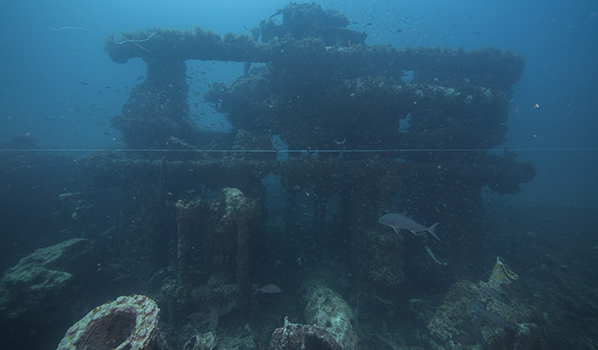How Sea Creatures Have Adapted To Life In Sunken World War II Vessels
Sunken WWII ships have become homes for marine species, posing both ecological benefits and risks. Explore these underwater habitats.
By Emilie Le Beau Lucchesi
Jul 8, 2024 1:00 PM

Bow section of Dixie Arrow. (Credit: Hoyt, NOAA
In March of 1942, the U.S. was only a few months into the Second World War. Already, German submarines lurked near the Atlantic coast, hunting for supply freighters and battleships. Late in the month, a U-71 detected the Dixie Arrow, an oil tanker carrying more than 86,000 barrels of crude oil from Texas to New Jersey.
The submarine fired two torpedoes at the target. Within a minute, the tanker was ablaze and sinking. Twenty-two crew members made it to safety; 11 died in the attack.
The tanker sank 90 feet to the ocean floor and landed upright. As the decades passed, the ship became part of the seascape. It is now one of many sunken WWII vessels where marine life has adapted as places to hunt, hide, or call home.
How Shipwrecks Impact the Environment
More than three million known shipwrecks have found their way to the bottom of the world’s waterways. Although ships have been sinking for thousands of years, scientific inquiry into these wrecks is more recent. In the 1920s, British scientist Lilian Lyle investigated a wreck in Scapa Flow (a body of water between the Orkney Islands in Scotland) and launched the academic study of sunken ships.
More:
https://www.discovermagazine.com/the-sciences/how-sea-creatures-have-adapted-to-life-in-sunken-world-war-ii-vessels
